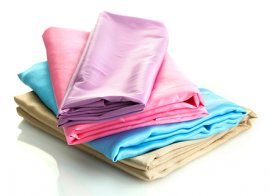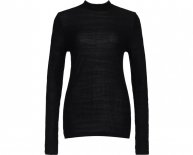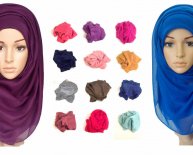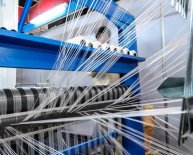
Viscose iron setting

Acetate
When ironing acetate, use a low temperature setting and no steam. Turn the fabric inside out to prevent shine marks.
Acrylic
When ironing acrylic, turn the fabric inside out, set the temperature to a low setting and do not use any steam. Use a spray if necessary. Make sure to iron the fabric while it is completely dry, so it doesn’t stretch out of shape
Corduroy
When ironing corduroy, turn the garment inside out and use a heavy ironing cloth. Then, use your hand to smooth the fabric.
Cotton
Iron cotton while the fabric is still damp, or pre-moisten it with a spray bottle. Set the temperature to a high setting and use steam for stubborn wrinkles and creases.
Cotton-Blend
Iron cotton-blends on low heat and use steam. Iron the garment inside out or place a press cloth, such as a clean cotton handkerchief or fabric scrap, between the iron and the fabric to prevent iron marks and shine.
Denim
Iron denim on the highest heat setting and use steam. Use starch for crisp, neatly creased fabric.
Linen
Iron linen garments inside out or place a press cloth, such as a clean cotton handkerchief or fabric scrap, between the iron and the fabric to prevent shine. Always iron linen while the fabric is still damp, or pre-moisten it with a spray bottle. Use spray-on starch or fabric sizing for collars, cuffs or any other areas that you want to make crisp.
Nylon
When ironing nylon, use the lowest temperature setting on the iron and place a press cloth, such as a clean cotton handkerchief or fabric scrap, between the iron and the fabric. If necessary, convert to the “Steamer” function to gently remove wrinkles from nylon.
Polyester
When ironing polyester, make sure the fabric is slightly damp, or pre-moisten it with a spray bottle. Set the temperature to low or medium heat. Start ironing at the top and work your way down the garment, pressing firmly on the creases and re-wetting them if necessary.
Rayon
When ironing rayon, turn the garment inside out, set the temperature to low heat and don’t use any steam. Iron one small area at a time to avoid stretching.
Silk
Iron silk while the fabric is still damp, or pre-moisten it with a spray bottle. Turn the garment inside out before ironing, and set the temperature to the lowest heat setting. Place a press cloth, such as a clean cotton handkerchief or fabric scrap, between the iron and the fabric to prevent shine.
Viscose
Iron viscose while the fabric is still damp, or pre-moisten it with a spray bottle. Set the temperature to the lowest setting and use a dry iron unless otherwise noted on the tag. Place a press cloth, such as a clean cotton handkerchief or fabric scrap, between the iron and the fabric to prevent shine.
Wool & Wool-Blends
Iron wool and wool-blends on low heat and use steam (ironing wool while it is dry can damage the fabric). Turn the garment inside out to prevent iron marks and shine.
Window Decor
Drapes can easily be steamed using the Vertical Shot of Steam® feature while hanging in place. Start at the top and continue down in a straight line. Steaming your drapes on a regular basis can help eliminate spots, odors and wrinkles.

















